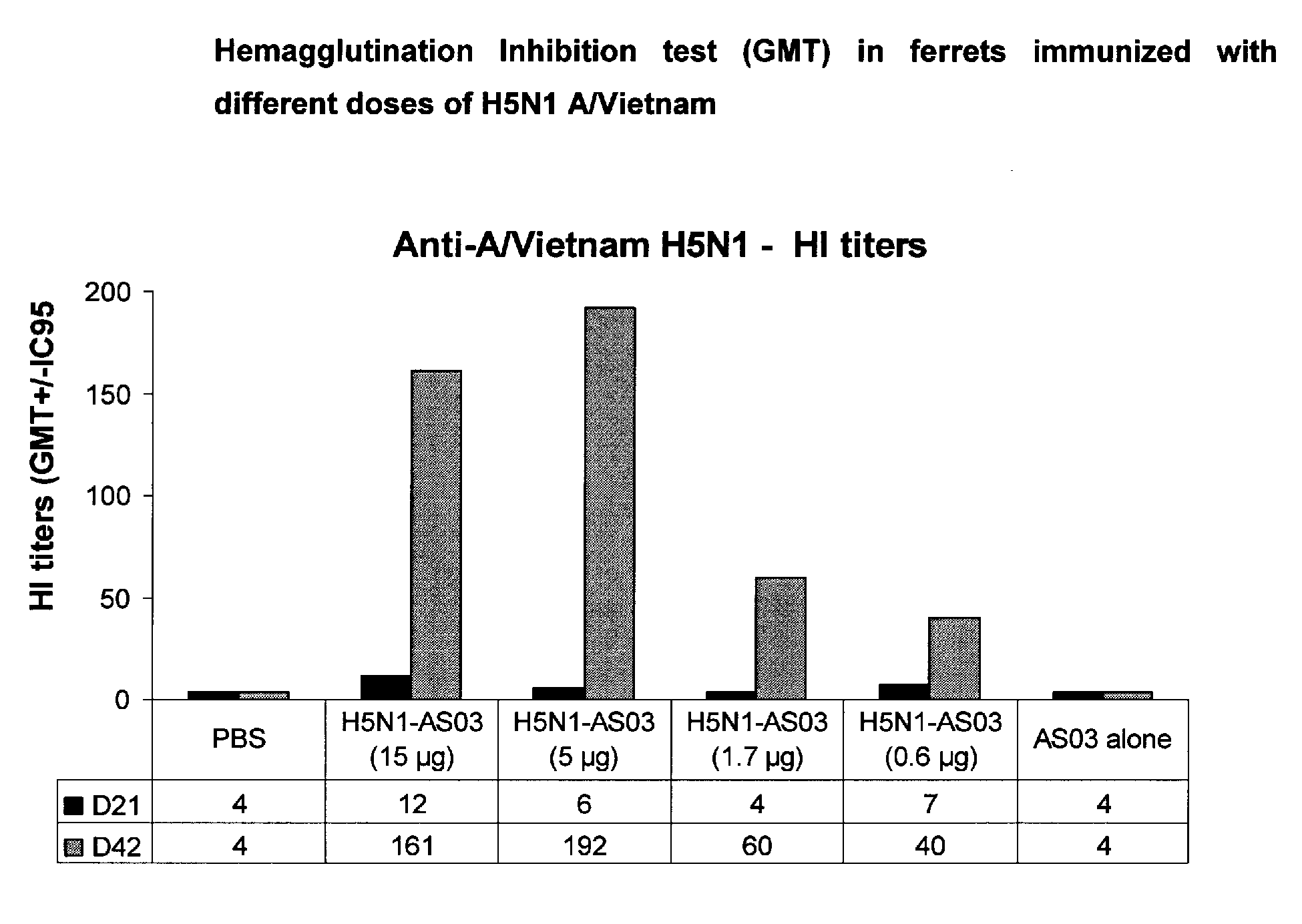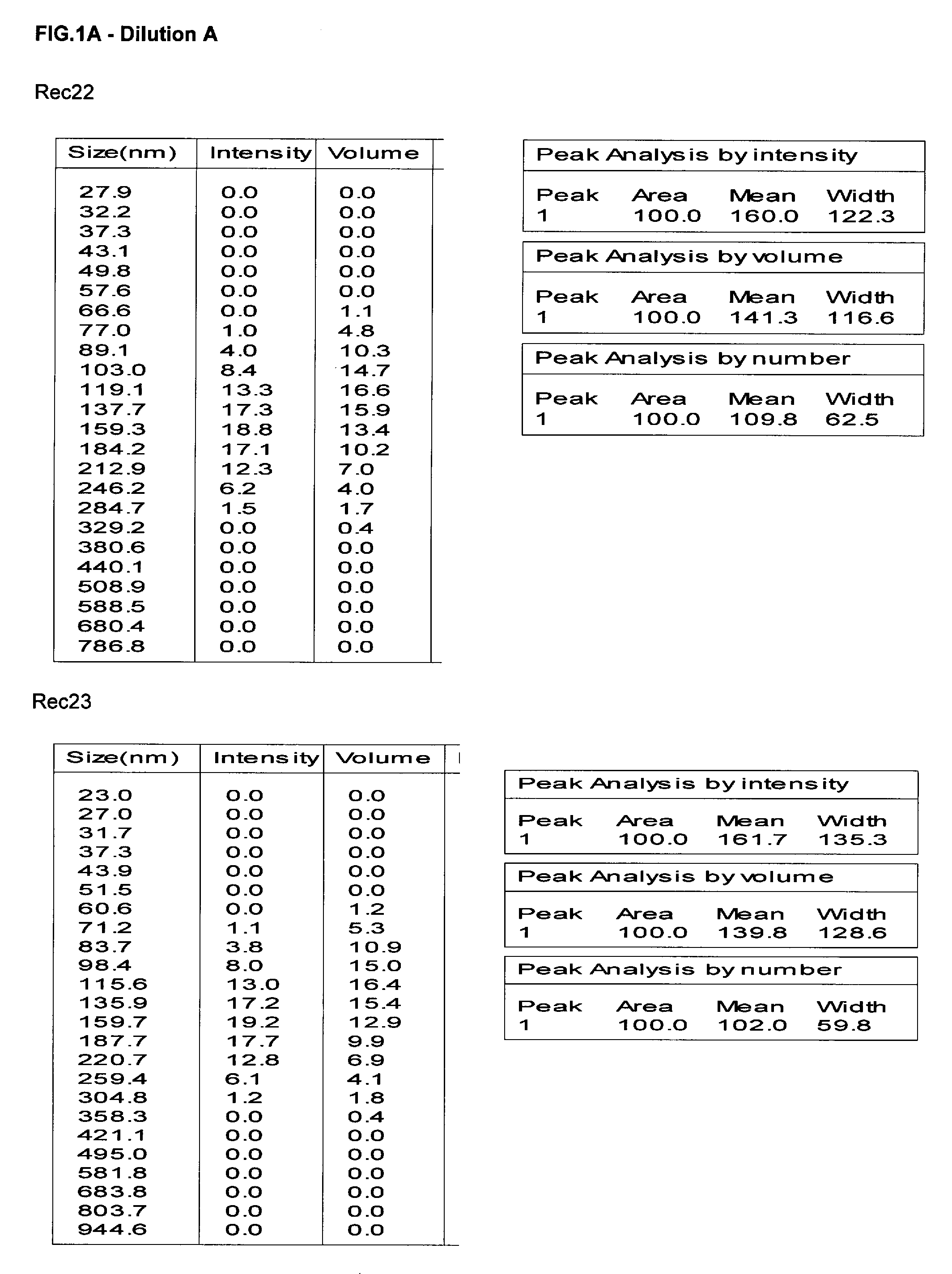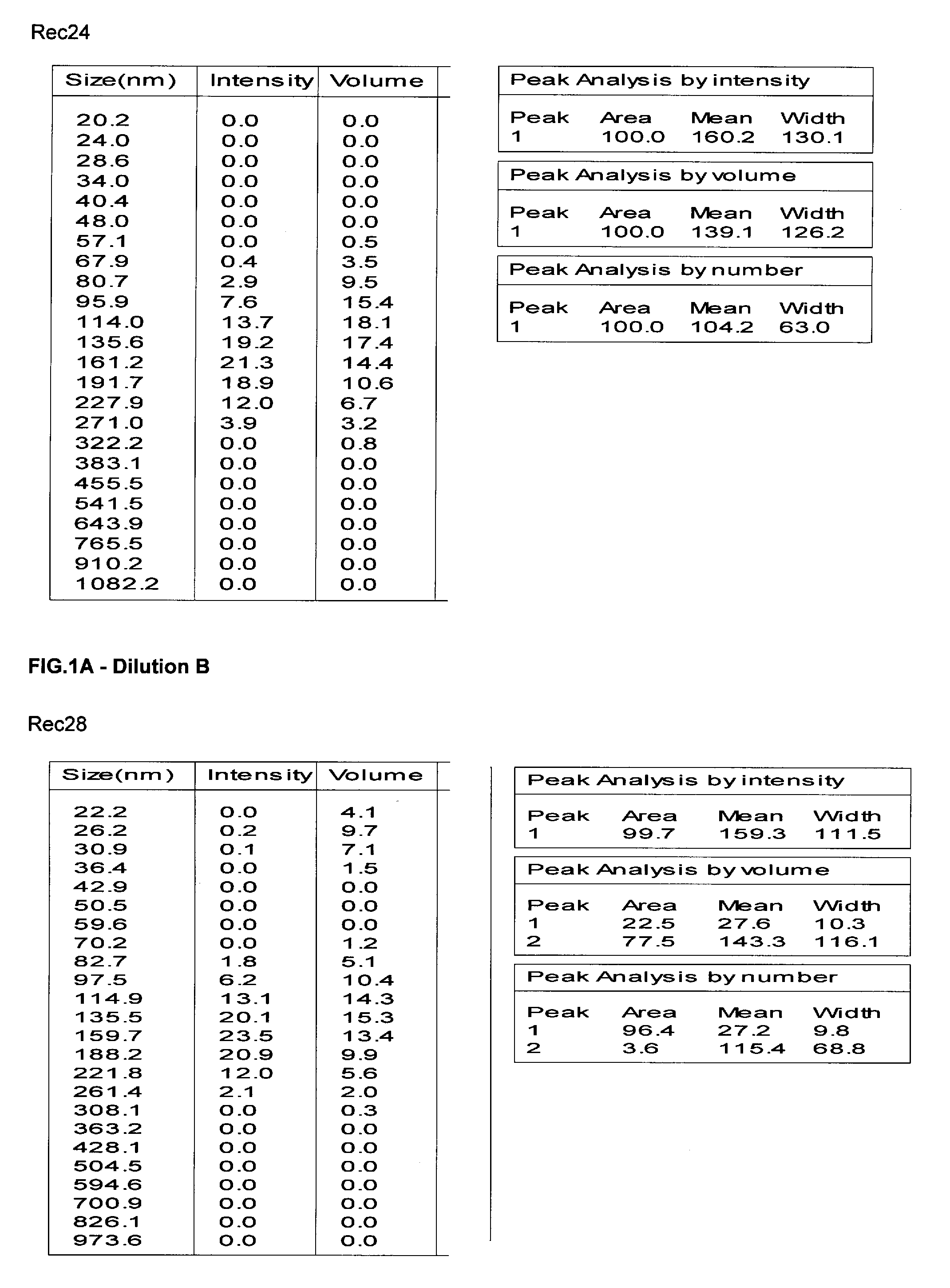Influenza vaccine
a technology of influenza vaccine and vaccine formulation, applied in the field of influenza vaccine formulation and vaccination regime, can solve the problems of high transcription error rate, economic burden, morbidity and even mortality, and amino-acid substitution of surface glycoproteins
- Summary
- Abstract
- Description
- Claims
- Application Information
AI Technical Summary
Benefits of technology
Problems solved by technology
Method used
Image
Examples
example i
Immunological Read-Out Methods
I.1. Ferrets Methods
[0210]Suitable methods are given below which are routinely used for experiments performed with seasonal strains. The skilled reader will understand that it may need some adaptation or optimization depending on the influenza strain used.
I.1.1. Hemagglutination Inhibition Test (HI)
Test Procedure.
[0211]Anti-Hemagglutinin antibody titers to the influenza virus strain are determined using the hemagglutination inhibition test (HI). The principle of the HI test is based on the ability of specific anti-influenza antibodies to inhibit hemagglutination of horse red blood cells (RBC) by influenza virus hemagglutinin (HA). After pre-treatment of sera (cholera, RDE, heat inactivation, . . . ), two-fold dilutions of sera are incubated with 4 hemagglutination units of the influenza strain. Horse (adaptation: turkey, or horse) red blood cells are then added and the inhibition of agglutination is scored. The titers are expressed as the reciprocal of ...
example ii
Preparation and Characterization of the Oil in Water Emulsion and Adjuvant Formulations
[0275]Unless otherwise stated, the oil / water emulsion used in the subsequent examples is composed an organic phase made of 2 oils (alpha-tocopherol and squalene), and an aqueous phase of PBS containing Tween 80 as emulsifying agent. Unless otherwise stated, the oil in water emulsion adjuvant formulations used in the subsequent examples were made comprising the following oil in water emulsion component (final concentrations given): 2.5% squalene (v / v), 2.5% alpha-tocopherol (v / v), 0.9% polyoxyethylene sorbitan monooleate (v / v) (Tween 80), see WO 95 / 17210. This emulsion, termed AS03 in the subsequent examples, was prepared as followed as a two-fold concentrate.
II.1. Preparation of Emulsion SB62
II.1.1. Lab-Scale Preparation
[0276]Tween 80 is dissolved in phosphate buffered saline (PBS) to give a 2% solution in the PBS. To provide 100 ml two-fold concentrate emulsion 5 g of DL alpha tocopherol and 5 ml...
example iii
Pre-Clinical Evaluation of an Adjuvanted Pandemic Split Influenza Vaccines (Comprising H5N1 Strain) in Ferrets
III.1. Rationale and Objectives
[0308]Influenza infection in the ferret model closely mimics human influenza, with regards both to the sensitivity to infection and the clinical response. The ferret is extremely sensitive to infection with both influenza A and B viruses without prior adaptation of viral strains. Therefore, it provides an excellent model system for studies of protection conferred by administered influenza vaccines.
[0309]This study investigated the efficacy of H5N1 Split vaccines adjuvanted with AS03 to protect ferrets against a lethal challenge with the H5N1 homologous strain A / Vietnam / 1194 / 2004 or with a heterologous strain A / Indonesia. The objective of this experiment was to demonstrate the efficacy of an adjuvanted influenza vaccine compared to ferrets immunized with PBS or the adjuvant alone.
III.2. Experimental Design
III.2.1. Treatment / Group (Table 4)
[0310]...
PUM
| Property | Measurement | Unit |
|---|---|---|
| Fraction | aaaaa | aaaaa |
| Fraction | aaaaa | aaaaa |
| Fraction | aaaaa | aaaaa |
Abstract
Description
Claims
Application Information
 Login to View More
Login to View More - R&D
- Intellectual Property
- Life Sciences
- Materials
- Tech Scout
- Unparalleled Data Quality
- Higher Quality Content
- 60% Fewer Hallucinations
Browse by: Latest US Patents, China's latest patents, Technical Efficacy Thesaurus, Application Domain, Technology Topic, Popular Technical Reports.
© 2025 PatSnap. All rights reserved.Legal|Privacy policy|Modern Slavery Act Transparency Statement|Sitemap|About US| Contact US: help@patsnap.com



